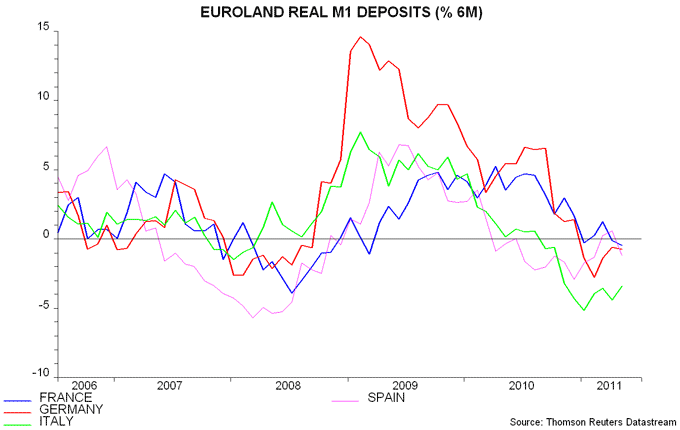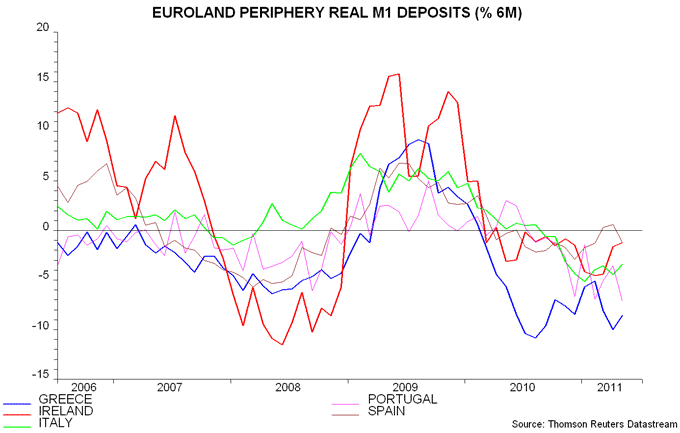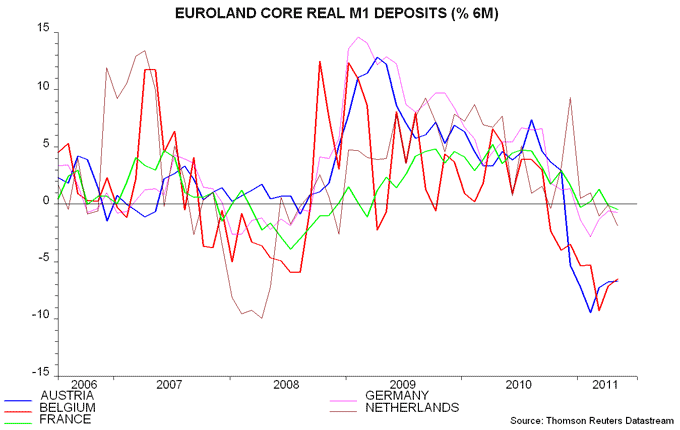Italian government bonds have come under pressure partly because the country’s economic recovery has ground to a halt, as reflected in very soft June purchasing managers’ survey results. (Italy’s composite PMI fell to 48.4, below the 50 break-even level and lower than Spain’s 49.2.) As usual, economic weakness was signalled six months in advance by real narrow money, which started to contract in late 2010, a development discussed in a post in December.
In general, narrow money M1 is a better leading indicator than broader measures. In the ECB’s statistics, M1 comprises currency in circulation and overnight deposits. The ECB publishes a geographical breakdown of deposits but not currency. The first chart shows six-month changes in real overnight deposits for the four large economies. Italian weakness is extreme, with a faster rate of contraction than before the 2008-09 recession.
In late 2010, in contrast to Italy and Spain, real deposits were still growing in Germany and France, implying respectable economic prospects for the first half of 2011. Now, contraction is occurring even in the core, while the pace of decline in Spain has moderated. This suggests that the recent “two-speed” Eurozone economy will give way to generalised weakness during the second half, though with Italy underperforming.
The second chart compares Italy and Spain with the other peripherals. Ireland has recently decoupled from rapid declines in Greece and Portugal, suggesting a smaller risk that renewed recession will undermine fiscal plans and trigger a second bail-out.
Among core economies, real overnight deposits are contracting at a similar pace to Greece / Portugal in Austria and Belgium – third chart. Belgian government yields have been eerily stable in recent days, despite the country’s high debt – the Italian / Belgian 10-year spread has blown out to 160 basis points (Tuesday 9.00am) from 40 bp in mid May.


